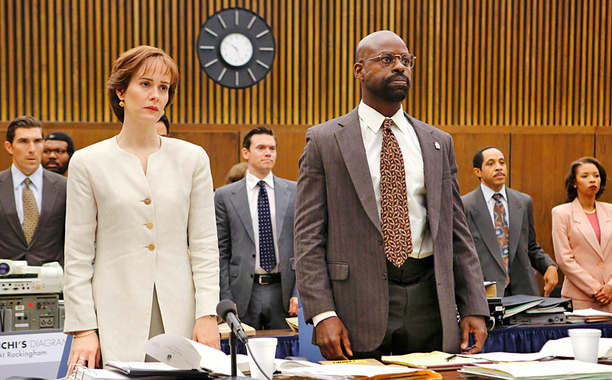MEDIA: The first season of FX’s new series breached one of the most sensational criminal trials of modern America, exposing the media’s role in dividing and in neglecting the shattered lives of the double murder.
By Matt Kaye, Editor
The 90s were a time noted for economic expansion and centrist reforms, but also a time marked by racial divide. In particular, in the City of Los Angeles, the feeling was all too present. The Rodney King riots of 1992 put the Los Angeles Police Department (LAPD) in a fragile state, and it’s no surprise that two years later the murders of two white persons at the alleged hands of a black man would come down to racism.
FX expressed The People of the State of California v. Orenthal James Simpson, rather unlike the 1994–1995 mass media, from the perspectives of the two legal teams: an initially confident prosecution team led by Marcia Clark (Sarah Paulson) and second-chaired by Christopher Darden (Sterling Brown), and the extensive defense coalition, driven by Johnnie Cochran (Courtney Vance) who was accompanied by Robert Shapiro (John Travolta), F. Lee Bailey (Nathan Lane) and Robert Kardashian (David Schwimmer) among others.
In doing so, the television network jumped inside the offices and minds of the lawyers behind the spectacle, offering many opportunities of shock and empathy for viewers still feeling unsatisfied from the crime’s morbidness and trial’s unpredictability.
From the inside looking out, the series’ first season strongly questioned the media’s obsession with race and, at times, sex in the midst of a quest for justice.
The motive of the defense was clear from the start: distract the jury from the cold, hard evidence clung to by the prosecution. A black defendant, two white victims and a long line of investigators from the notorious LAPD provided the frame for an artfully painted picture drawn through cross-examinations and wordy arguments just mesmerizing enough to keep the jury’s eyes off of the facts.
The media followed along, highlighting the evident racial divide between those in favor of conviction and those in favor of acquittal. Drawing the public away from the motive, behavior and objective proof, they advertised the trial as a circus, paying close attention to the next act the defense would introduce. Working, at some times, in tandem with the storyline, the defense team made sure the sequestered jury got a taste of the talk.
Meanwhile, Marcia Clark’s hair shone through the mounds of incriminating evidence. Depicted as an ugly, vicious woman with a messy marriage, the lead prosecutor dealt with some of the media’s serious questions about how her hairstyle could impact the case. Let’s just say her hair received more attention than O.J.’s, which was found at the crime scene.
FX allowed us to watch the slow but unstoppable degradation of the People’s case and the counselors themselves. Blow after blow, the attorneys moved on, sometimes gracefully, sometimes angrily. They took their fight for justice for the victims’ heartbroken and forgotten families to heart. If the verdict did not help achieve that, then surely this season of American Crime Story did something to recognize that lives were ended, tears were shed and fairness was abandoned.

